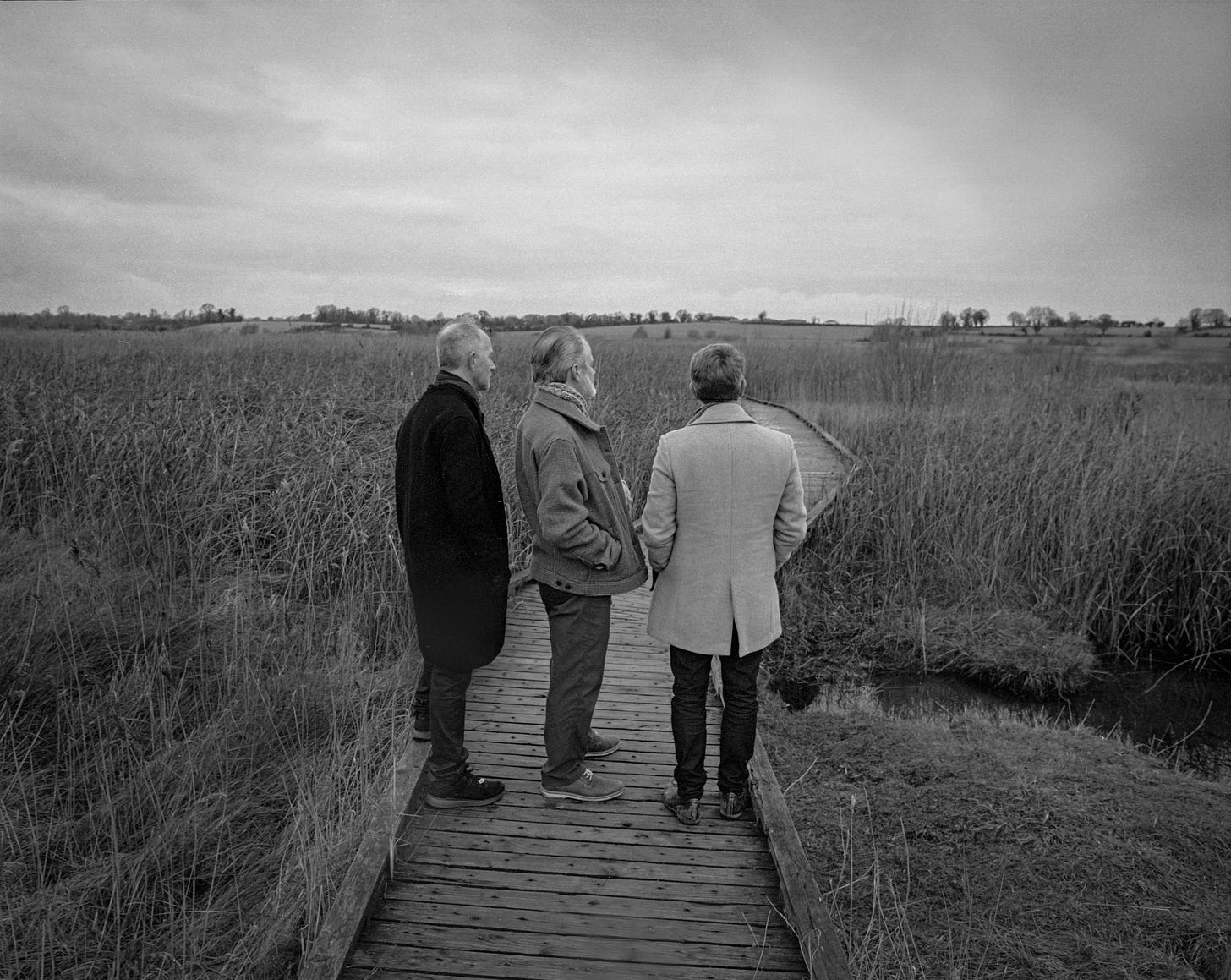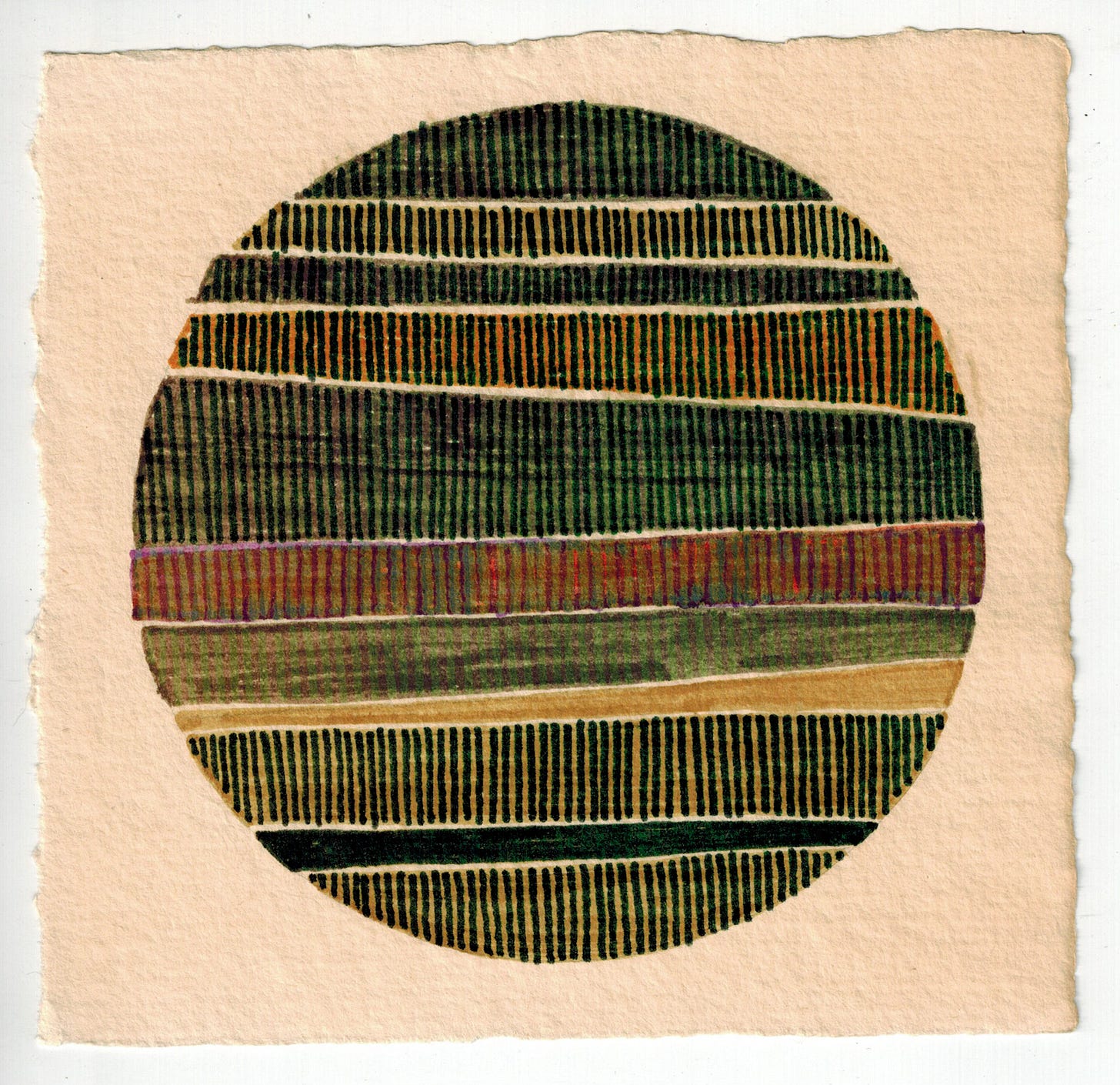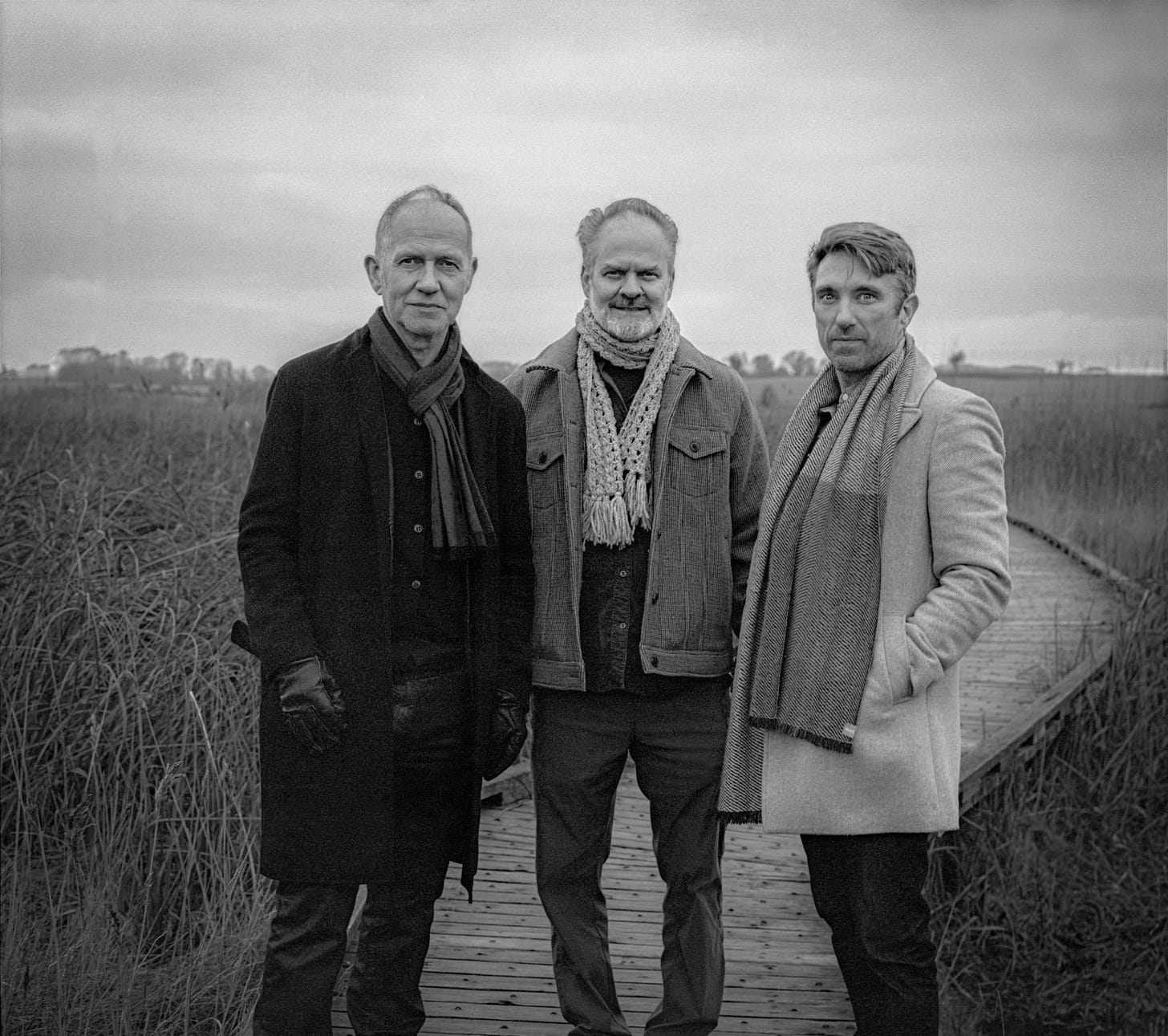
In February I went to Ireland to work with Caoimhín on our next duo album, and we also spent an afternoon in a fen with the wonderful photographer Hugh O’Conor to get some photos of Caoimhín, Iarla, and myself, for the Stromatoliths album. You can see the first photo above, and more below, but before we get to that, have a listen to “Quern Stone,” movement 4 from Midden Find:
“Quern Stone,” movement 4 from Midden Find
- Caoimhín Ó Raghallaigh, Hardanger d’Amore
- Contemporaneous, conducted by David Bloom
- Composed by Dan Trueman
- Recorded, Mixed, and Mastered by Matt Poirier
from the album Stromatoliths, on Many Arrows Music
Quern stones—which you might find in a midden, if you are so fortunate—typically come in pairs, one rotated within the other to grind up grain and make it more digestible. Friction and gravity, along with a bit of elbow grease:
The movement “Quern Stone” in Midden Find has many of these features too: a chafing duo between Hardanger d’Amore and electric guitar (played by the brilliant Brendon Randall-Myers), overlapping meters that rub against one another, reinforced by heavy foot stomping, and some curious little rotating fingering patterns in the fiddle part (more on that below). I’m sure there is more.
When I was a kid, we lived in a little house on a plateau outside Aix-in-Provence that was surrounded by woods and an open meadow filled with curiosities: critters, stones, fossils, and more. It was a bit of a midden itself, and I found half of an old quern stone there (I still have it, in the garden at my house now). In our photoshoot in the fen, Caoimhín suggested we bring a few things that one might find in a midden:
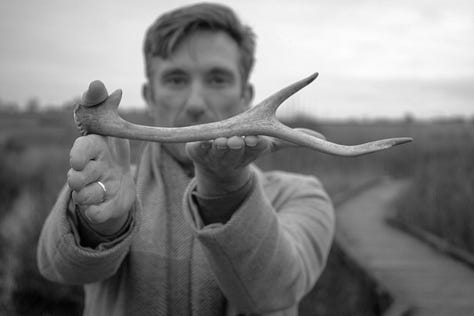
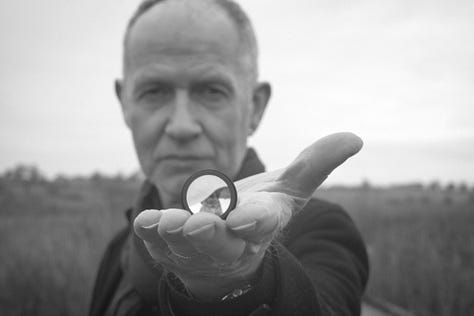
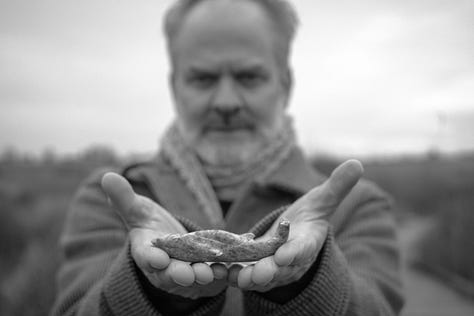
Things you might pick up and say… “hmmm….” or even… “haw!”
Caoimhín had this to say about “Quern Stone”:
OK, where to begin? First of all, this tune feels very 'Dan', meaning that it does all these delightful and unexpected things that I would never ever think of doing myself. But this is Dan doing his 'Dan' thing in 'my' tuning of CAEAC (bottom string up), and Dan is probably doing his 'Dan' thing, thinking 'how do I make this so that it sits nicely for Caoimhín'. So it really is a tailor-made tune in some pretty unique and outrageous fabric that I would never in a million years have picked out for myself.
It’s true! This is the first tune I made in this particular tuning, one that Caoimhín plays in a lot, so it felt collaborative in that I was imagining him playing in one of this favorite tunings, one that I was just getting to know. He continues…
The 'duo' with the electric guitar is probably the bit of this entire piece that I was most looking forward to recording, it's just so badass. I love how the parts are slightly phased and how it all tends to propel relentlessly forward. It's the kind of thing that you can only really make work when you're in the same room, really locked in together.
BUT, here's the thing: we never got to record it like that! I flew over to the US in June 2023, spent a few days rehearsing with Contemporaneous in advance of a National Sawdust show and the recording session. All was going great until the day of the show—all musicians arriving for the soundcheck had to do a Covid test just inside the door at National Sawdust. Covid at that point was pretty much in the rearview mirror, but for some reason National Sawdust still required all performers to do a test. And wouldn't you know it, but I tested positive, must have picked it up on the flight on the way over. An absolute disaster! Dan stepped into the breach and played a phenomenal show on zero rehearsal, but what to do about the recording session? In the end, Contemporaneous went ahead and recorded all their parts together, while I flew back to the US the next month and overdubbed all my parts. Through the genius of Dan and Matt (Poirier), it all worked out beautifully, and in some ways it gave us a lot more freedom to try out some different approaches to some of these pieces, and not feel like I was wasting everyone's time. The only slight regret I have is that we didn't get actually to record that badass hardanger/electric guitar duo in the room together. But it turned out pretty great in the end nonetheless!
Yeah, wow, that definitely was NOT the plan, and in the recording session I ended up making a scratch track of Caoimhín’s part, so the ensemble (and Brendon) could hear something while recording; again, a strange kind of collaboration, because I was playing imagining I was Caoimhín and knowing that Caoimhín would re-record the part his own way later! And it’s true, there were benefits to this approach, where we could experiment and try different things in the overdub session, without keeping an entire chamber orchestra sitting there waiting for us.
I always love how Dan sometimes has echoes and fragments of pieces bouncing between different projects, albums, decades. Check out 'Lazy Undertow' from his solo 'Fifty Five' album for the absolute coolest pre-echo of the electric guitar duet. Dan's bowing on that piece is outrageous—it pulls and pushes at the same time, like two trains passing each other, going the same direction, and he's somehow traveling on both simultaneously...
Well, ok, thanks C! I do enjoy working with material in different contexts, revising them, seeing how they change, how I change, what I might learn about them. Maybe a bit lazy, but maybe not? In this case, I was moving a fingering from the tuning DADF#E to Caoimhín’s CAEAC tuning, specifically focused on the two strings a third apart, so the shift from the DF# major third to the AC minor third was pretty significant, leading to some interesting variations and modifications. Here it is in the “Lazy Undertow” DADF#E tuning (all in treble clef) with the sounding pitches at the top and the “as-fingered” notation on the bottom (so the “A-string” stuff ends up sounding a minor-third lower, the A becoming F#, the Bb becoming G, etc…):

which becomes these sounding pitches in the CAEAC for “Quern Stone”:
Brave fiddlers can tune up their instruments these ways and try this all out! “Lazy Undertow” starts at about 5:30 here, if you want to listen:
Collaboration itself can be a kind of quern stone. Caoimhín and I have worked together for many many years now; we play the same kind of instruments (the Hardanger d’Amore and the Hardanger fiddle) and I can say that my own playing and musical outlook have both been deeply influenced by Caoimhín. But, we come from such different places and have really different strengths and interests, so what emerges from our collaborations often seems like the product of an effortful, frictional, gravitational—and delightful—rotation.
And… the score for “Quern Stone:”






